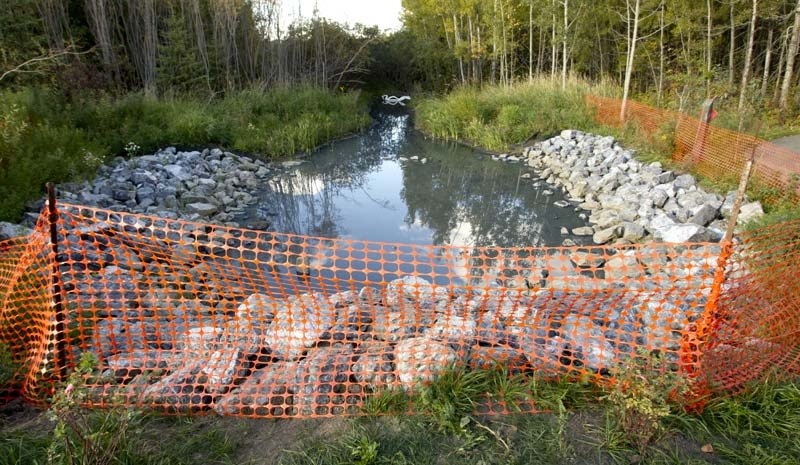Last month’s mystery spill in St. Albert was loaded with heavy metals that could have harmed fish had it reached the Sturgeon River, says the city’s environmental manager.
City crews finished mopping up a stinky spill from a stormwater outfall this week near the Sturgeon River.
Spotted on Sept. 24, the spill released a vast amount of a powdery, grey-blue substance that smelled like sewage into the city’s stormwater system, much of which pooled outside of outfall No. 3 by the BMX track in the Riel Industrial Park. The spill was soon contained, with the contaminated fluid stopping about 50 metres short of the Sturgeon itself.
Crews vacuumed up about 50 cubic metres of contaminated fluid from the site, said city environment and sustainability manager Leah Kongsrude.
That’s enough fluid to fill about 300 bathtubs or five tandem dump trucks.
“A lot of that is water,” Kongsrude noted, and some of that water was from crews pressure-washing gunk off the rock bed of the outfall.
The site is now clean, she continued, although crews will keep an eye on it in case recent rains washed out any more fluid.
Crews sent samples of the fluid for tests to try to identify the mystery substance.
Kongsrude is still waiting on the hydrocarbon tests, but said initial results suggest the spill contained high levels of aluminium, iron, chromium and zinc, each of which was slightly or significantly above the Canadian Council of Ministers of the Environment’s guidelines for the protection of aquatic life.
“It’s very unusual to get chromium, zinc and this level of aluminium in the water,” Kongsrude said, although local groundwater often has very high levels of iron.
These metals were at levels that could have harmed fish and other aquatic organisms had the spill reached the Sturgeon.
Crews are now inspecting stormwater lines with cameras to try and find the source of the spill, Kongsrude said. Bacterial tests found no E. coli in the water, suggesting that the spill did not come from a cross-connection to a sewage line.
Still, the odds of them finding the source of this spill are slim, as the outfall collects water from a huge region, she said.
“We definitely want to make sure it’s not something that happens on a regular basis.”




